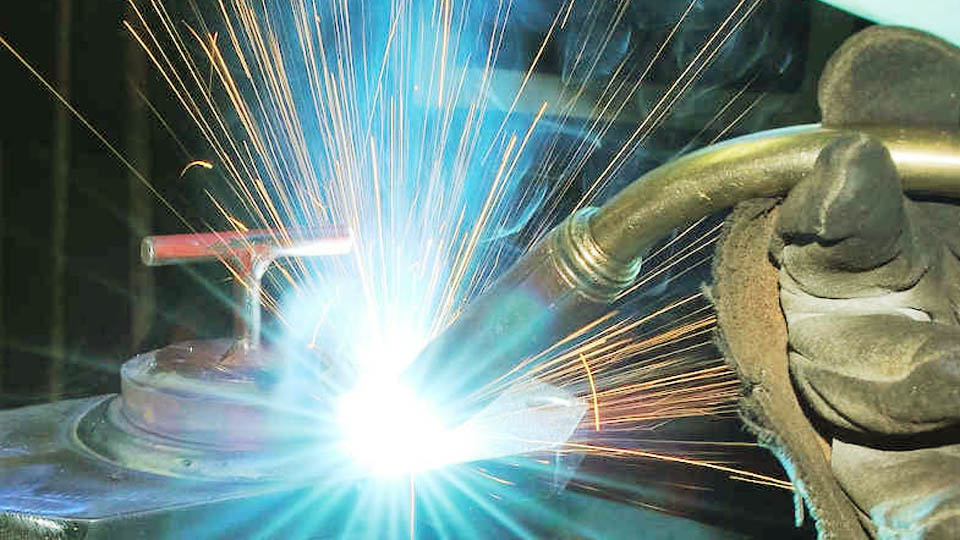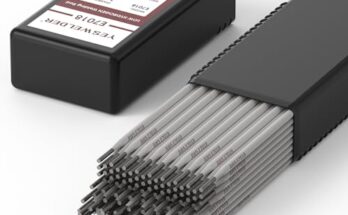Welding cast iron with a MIG welder is a tricky process, but with the right approach, it can be done successfully. I’ve worked on cast iron repairs before, and I know how frustrating it can be if you don’t use the correct techniques.
Cast iron is brittle and prone to cracking, so it requires special care during welding. If you’re planning to repair a cracked exhaust manifold, an old engine block, or any other cast iron component, I’ll guide you through the process to ensure the best results.

Image by weldpundit
Cast Iron and Its Challenges
Cast iron is an iron-carbon alloy with a high carbon content, usually between 2% and 4%. This high carbon content gives it strength and wear resistance, but it also makes it brittle.
When you apply heat to cast iron, it expands rapidly. If not handled correctly, the material can crack as it cools. That’s why welding cast iron is more difficult than welding mild steel or stainless steel.
Some common types of cast iron include:
- Gray Cast Iron – The most common type, often used in engine blocks and pipes.
- Ductile Cast Iron – A more flexible version with improved strength.
- White Cast Iron – Extremely hard and wear-resistant but difficult to weld.
Can You Weld Cast Iron with a MIG Welder?
Yes, you can weld cast iron with a MIG welder, but you need to take the right precautions. MIG welding isn’t the best option for cast iron, but if done properly, it can be an effective method for repairs.
MIG welding works well for cast iron when using the correct filler wire and controlling heat input. Nickel-based wire (like ERNiFe-CI) is the best choice, but if you’re on a budget, you can also use stainless steel wire, such as 309L.
However, mild steel wire (ER70S-6) should be avoided because it doesn’t match the properties of cast iron and can cause cracking.
Choosing the Right Filler Wire
Picking the right filler wire is crucial for a strong weld. Below is a comparison of different wires you can use for MIG welding cast iron:
| Filler Wire | Best Used For | Pros | Cons |
|---|---|---|---|
| Nickel-based (ERNiFe-CI, ERNi55, ERNi99) | Most cast iron repairs | Strong, machinable welds | Expensive |
| Stainless Steel (309L, 312) | Low-stress repairs | Good strength, lower cost than nickel | Not as machinable |
| Mild Steel (ER70S-6) | Temporary fixes | Cheap and readily available | Prone to cracking, weak bond |
If you need the best long-term repair, I highly recommend using a nickel-based wire. It’s more expensive, but it reduces the chances of cracking.
Preparing the Cast Iron for MIG Welding
Before you start welding, you need to prepare the cast iron properly. Skipping this step can lead to poor welds and cracks. Here’s how you should do it:
Clean the Surface – Remove any dirt, rust, paint, or oil from the cast iron using a wire brush or grinder. Cast iron is porous and absorbs contaminants, so degreasing it is important.
Grind the Crack or Joint – Use an angle grinder to bevel the edges of the crack or joint. This allows better penetration of the weld.
Preheat the Metal – Heat the cast iron slowly to around 500-1200°F using a propane torch or oven. Preheating helps reduce thermal stress and prevents cracking.
Tack Weld in Small Sections – Avoid running a long continuous bead. Instead, weld in short bursts to minimize heat buildup.
Control the Heat – Too much heat can cause the weld to crack. Let the metal cool down naturally by placing it in sand or wrapping it in a welding blanket.
The MIG Welding Process for Cast Iron
Once your metal is prepped, you can start welding. Here’s a step-by-step guide:
- Set Your Welder Correctly – Use a low amperage setting to prevent overheating. A voltage setting of around 17-20V and wire speed between 100-200 inches per minute is a good starting point.
- Use Short Beads – Weld in short bursts, about 1/2-inch at a time, and let the metal cool slightly between passes.
- Peen the Weld – Lightly tap the weld with a hammer while it’s still hot to relieve stress and prevent cracks.
- Keep the Workpiece Warm – Avoid letting the metal cool too quickly. Slow cooling prevents brittleness.
Post-Welding Treatment
After welding, cast iron needs proper cooling and finishing. Here’s what you should do:
- Slow Cooling – Never quench the weld with water. Instead, let it cool slowly by covering it with welding blankets or burying it in dry sand.
- Grind and Finish – Once the weld has fully cooled, grind it down if needed for a smooth finish.
- Check for Cracks – Inspect the weld carefully. If you see any cracks, you may need to grind them out and re-weld.
Alternative Methods for Repairing Cast Iron
If MIG welding isn’t giving you the results you want, consider these alternatives:
- Brazing – Uses a bronze filler rod and is often a better choice for cast iron than welding.
- Stick Welding (SMAW) – Works well with nickel-based electrodes.
- Cold Welding (JB Weld Epoxy) – Good for low-stress repairs without heat.
Is MIG Welding the Best Option for Cast Iron?
MIG welding can work for cast iron, but it’s not the best option. Stick welding with nickel rods or brazing usually gives better results. If you only have a MIG welder and need to make a repair, following the right process will help you succeed.
Common Mistakes to Avoid
- Skipping preheating – Increases the chances of cracks.
- Welding too fast – Causes too much heat buildup.
- Using the wrong filler wire – Can lead to weak or brittle welds.
Conclusion
Welding cast iron with a MIG welder is possible, but it requires careful preparation and technique. The key is controlling heat, using the right filler wire, and allowing the metal to cool slowly.
If done correctly, you can make a strong and durable repair. If you’re working on a critical part, stick welding or brazing may be a better choice.
FAQs
Can you MIG weld cast iron without preheating?
It’s not recommended. Preheating reduces the risk of cracking and improves weld quality.
What is the best wire for MIG welding cast iron?
Nickel-based wire (ERNi55 or ERNi99) is the best choice for strong and machinable welds.
Can I use flux-core wire to weld cast iron?
Flux-core wire isn’t ideal for cast iron. It doesn’t provide the right mechanical properties for a strong repair.
Why does my cast iron weld keep cracking?
Cracks usually happen due to excessive heat, improper cooling, or using the wrong filler wire.
Is brazing better than MIG welding for cast iron?
Yes, brazing often provides a better bond with less risk of cracking compared to MIG welding.





